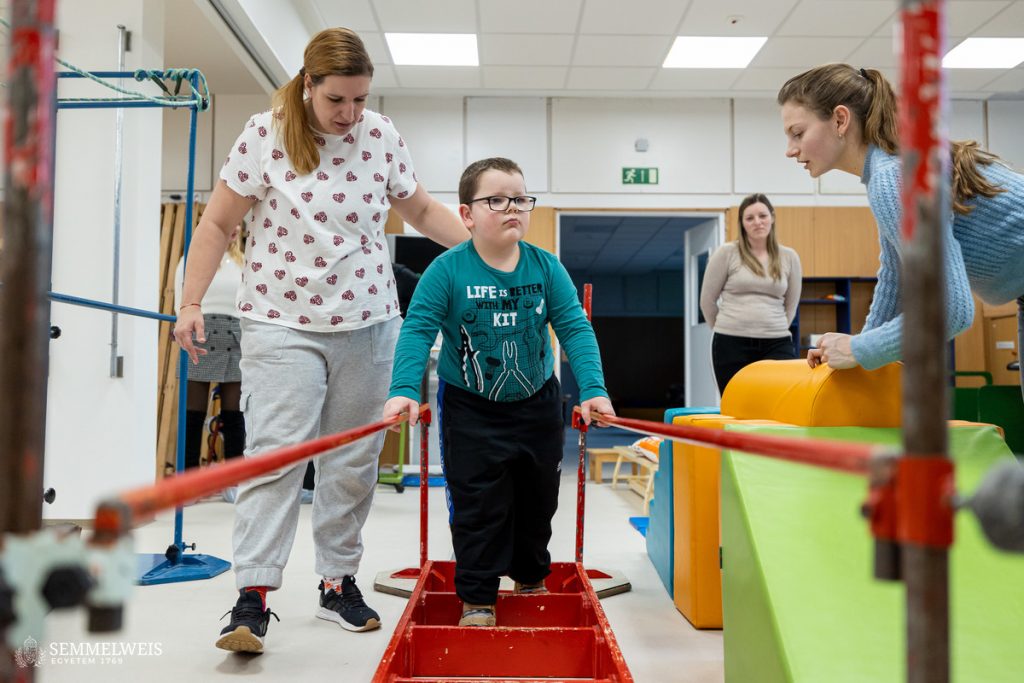Elementary (7-14 years old)
Our groups are homogeneous in respect of age and heterogeneous concerning diagnoses. We invite young people between 7 and 14 years of age. An elementary conductive intensive program is designed to provide comprehensive support and education for elementary-aged children with motor disabilities. These programs aim to enhance physical, cognitive, and social development.
Here’s an outline for such a program:
Week 1: Assessment and Orientation
- Initial Assessment: Begin with a thorough assessment of each child’s abilities, including motor skills, communication, cognitive development, and social interaction. Use standardized assessments and observations to identify strengths and areas for improvement.
- Orientation: Familiarize the children with the conductive education setting, instructors, and daily routines. Create a welcoming and inclusive environment that eases their transition into the program.
- Setting Individual Goals: Collaborate with parents, caregivers, and the children themselves to establish specific and measurable goals for each child’s development during the program.
- Individualized Plans: Based on the assessments and goals, create individualized development plans for each child. These plans should outline specific activities and strategies tailored to address their unique needs.
Week 2-3: Intensive Conductive Education
- Daily Sessions: Implement daily sessions that are engaging, age-appropriate, and intensive. Each session should include a blend of activities designed to promote mobility, fine motor skills, communication, and social interaction.
- Mobility and Motor Skills: Focus on activities that encourage mobility, balance, coordination, strength, and fine motor skills development. Activities may include walking, using adaptive equipment, and functional tasks such as dressing or eating.
- Communication Skills: Incorporate speech and communication exercises into daily routines. Encourage both verbal and non-verbal communication with peers and instructors. Work on improving articulation, vocabulary, and social communication.
- Social Interaction: Promote social interaction through group activities, team games, shared projects, and cooperative tasks. Teach and reinforce essential social skills like taking turns, sharing, and problem-solving.
- Academic Integration: If appropriate, integrate academic skills development into the program. Focus on age-appropriate educational goals that align with the child’s grade level.
Week 4: Progress Evaluation and Transition Planning
- Mid-Program Assessment: Conduct a mid-program assessment to track each child’s progress. Adjust individualized plans as necessary to address evolving needs.
- Transition Planning: Collaborate with parents, caregivers, and future educators to create a transition plan for each child. Ensure that gains made during the program are carried over into their regular school or educational setting.
- Celebration and Feedback: Celebrate the children’s achievements during the program. Share feedback and recommendations with parents, caregivers, and future educators.
- Resource Sharing: Provide parents and caregivers with resources, materials, and strategies they can use at home to support their child’s ongoing development.
Throughout the program, maintain open and regular communication with parents and caregivers to keep them informed about their child’s progress and engaged in the development process. Also, ensure that the program remains flexible and adaptable to meet the unique needs and abilities of each child, creating a supportive and enriching experience for all participants.
The programme is aimed at helping children achieve a higher level of independence in everyday life and fulfill their individual needs with less physical assistance. We focus on adaptation. Following assessment of the participants, comprehensive conductive tasks are composed, personal development plans and the goals of the programme are adjusted to the participants of the given group (diagnosis, severity, age). The conductive education process is supported by home tasks tailored to each individual’s needs.
